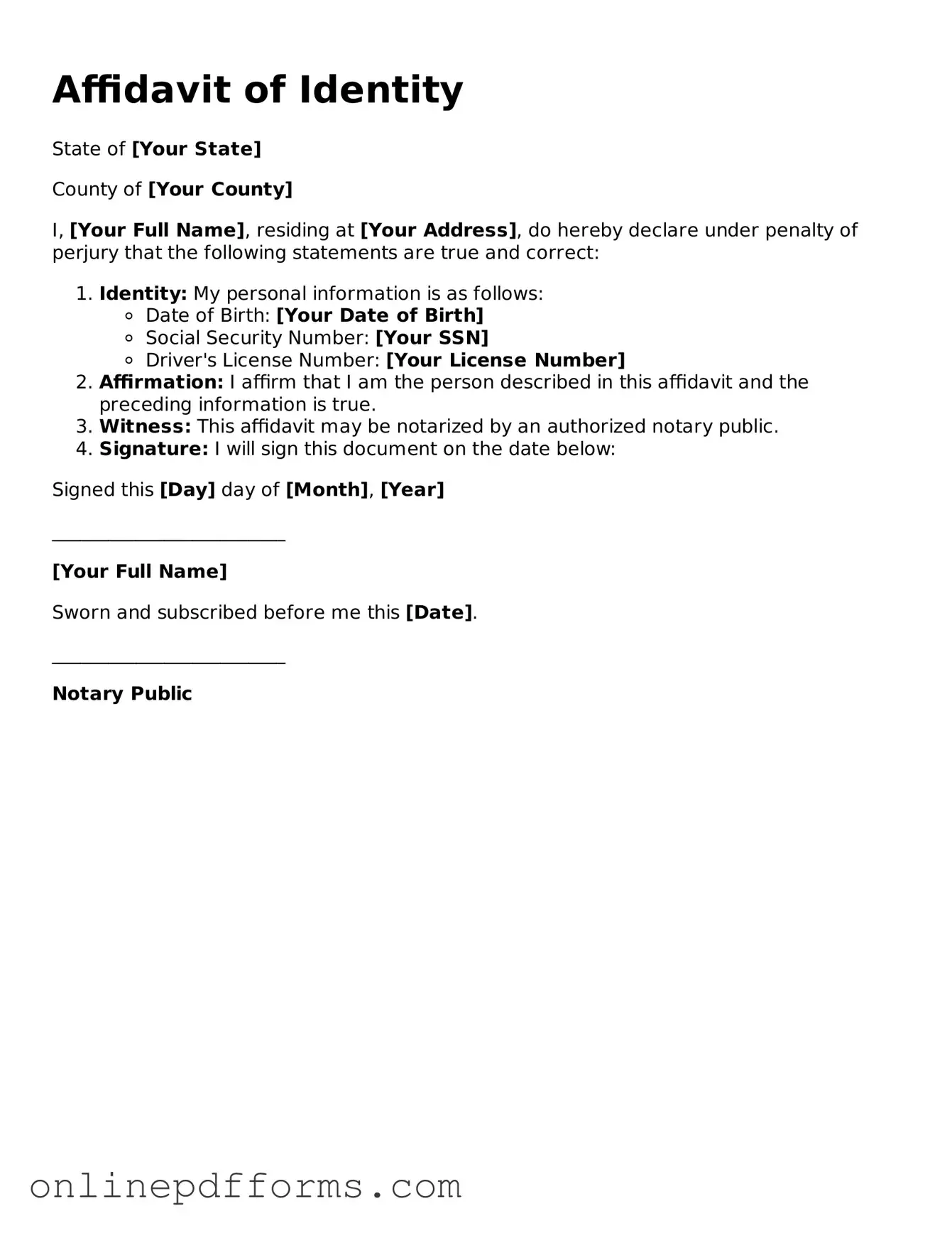The Affidavit of Identity form is similar to a Declaration of Identity. Both documents serve to confirm an individual's identity, often in situations where official identification is not available. A Declaration of Identity is typically a written statement made under penalty of perjury, affirming one's identity. This document can be used in various legal contexts, such as during court proceedings or when applying for certain government services.
Another comparable document is the Identity Verification Affidavit. This affidavit is specifically designed to verify a person's identity for legal or administrative purposes. Like the Affidavit of Identity, it requires the individual to provide personal information and may involve a witness or notary to affirm the identity of the signer. Both documents aim to establish authenticity and prevent fraud.
The Sworn Statement of Identity shares similarities with the Affidavit of Identity in that it is a sworn declaration made under oath. This document is often used in legal proceedings to assert one's identity formally. The individual signing the sworn statement must do so in front of a notary public or another authorized official, ensuring the statement's validity.
A Certificate of Identity is another document that parallels the Affidavit of Identity. This certificate is typically issued by a government agency and serves as proof of a person's identity. While the Affidavit of Identity is a personal declaration, the Certificate of Identity is an official document that may require additional verification processes, such as background checks or documentation submission.
The Identity Affidavit for Minors is similar in purpose but specifically designed for individuals under the age of 18. This document allows a parent or guardian to affirm the identity of a minor, often required in legal situations like custody disputes or school enrollment. The process typically involves the same elements as the standard Affidavit of Identity, including personal information and signatures.
The Personal Identification Affidavit also resembles the Affidavit of Identity. This document is used to confirm a person's identity in various situations, such as applying for loans or opening bank accounts. It usually requires the signer to provide detailed personal information and may also need notarization to ensure its legitimacy.
The importance of a Single Status Affidavit cannot be overstated, especially for individuals planning to marry abroad. This legal document serves as official proof of one's unmarried status, ensuring that potential spouses can validate their eligibility for marriage in various jurisdictions. For those unfamiliar with the process, detailed information about obtaining this document can be found at https://onlinelawdocs.com/single-status-affidavit, which outlines the necessary steps to secure a Single Status Affidavit and assist couples in starting their new life together without any legal barriers.
A Letter of Identity is another document that can serve a similar function. This letter is often less formal than an affidavit and may be used in everyday situations, such as verifying identity for employment or rental applications. While it may not carry the same legal weight as an affidavit, it still serves to confirm the individual’s identity in a straightforward manner.
Finally, the Identity Affidavit for Immigration is comparable, as it is used to establish identity in immigration-related matters. This document is crucial for individuals seeking visas or residency and requires a detailed account of the individual's identity, similar to the Affidavit of Identity. It often needs to be accompanied by additional documentation to support the claims made within the affidavit.
